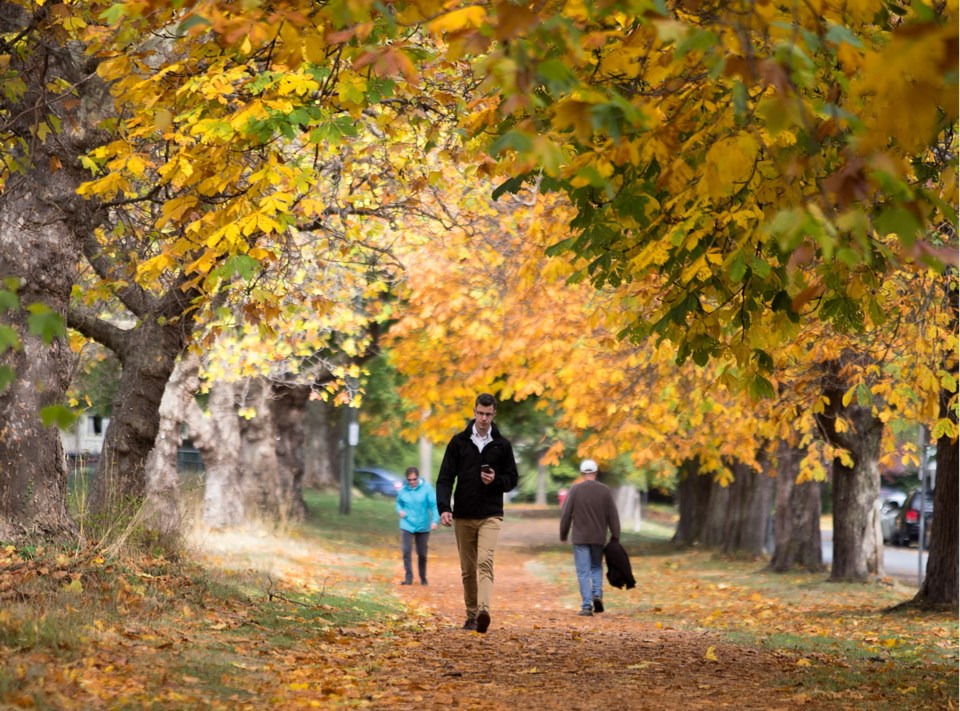Victoria city council is accelerating plans to save the city’s trees and prevent residents from rushing to chop them down before tougher regulations take effect.
Councillors initially agreed last month to protect any tree with a trunk diameter over 60 centimetres instead of the previous 80 centimetres.
Last week, however, they decided to go even further and reduce the size of protected trees to anything over 30 centimetres.
Councillors were persuaded to approve the stricter measure after people raised concerns that some residents might start removing trees smaller than 60 centimetres before the city completes the second phase of its tree bylaw review — a process that could lead to even tougher restrictions.
“I hadn’t thought about this from the perspective that we’re doing Phase 1 and everyone knows Phase 2 is coming,” Mayor Lisa Helps said.
“I can’t imagine that people are going to go out and start chopping down trees. But also I have heard, anecdotally, that there have been people who have done that in the past — even people that I know.
“So I think this is wise.”
Helps said council can always change its mind later if 30 centimetres is found to be too restrictive.
Coun. Ben Isitt argued that 30-centimetre threshold brings the city in line with other municipalities such as Esquimalt, but is still less restrictive than Vancouver’s 20-centimetre limit.
“I think it’s still a balanced approach,” he said. “It doesn’t go as far as Vancouver and other British Columbia urban municipalities. I hope we’ll go further.”
He noted that protecting trees is crucial in light of their ability to sequester carbon and mitigate the effects of climate change.
Coun. Geoff Young voted against the change, arguing that it will do more harm than good by discouraging people from planting trees in the first place. “People will be afraid that trees are going to be toxic to the value of their property,” he said, adding that trees could hinder residents’ ability to construct a garden suite or expand their home.
“So it’s not so much the tree stumps that we’re going to see that will represent the failure of this bylaw, it’s the trees that never get planted.”
He said residents can’t even trust that 30 centimetres will be the final threshold, since some people are already calling for it to be lowered further. The message, Young said, is that “you cannot trust us to actually make a decision and stick with it. We’re going to be changing the target all the time and any tree that you plant, of any size, is going to be a danger to the value of your property and you better not plant it.”
Frances Litman of the Community Trees Matter Network said in an interview that it’s crucial cities start taking better care of urban forests given the ability of mature trees to sequester carbon, produce oxygen, mitigate climate change and improve public health.
“What we seem to have lost sight of is that when much of this city was originally built, they did build around a lot of these [trees],” she said. “Otherwise we wouldn’t have houses on rocks and have the mature trees that we have.
“The job that trees do has been totally underestimated for years and we’re just starting to see the real value of a tree.”
The switch to a 30-centimetre threshold passed third reading, but won’t be adopted until staff come back to council on Nov. 14 with a report on the implications of the change.
Isitt argued for a quicker turnaround for fear that more trees will be removed before the change is adopted. “We don’t want to open up a heyday of chopping down potentially protected trees.”
Helps, however, said it is important to give staff time to assess the change.
“In some ways, we’re accelerating this, because we weren’t even going to be discussing 30 centimetres until a year from now,” she said. “So I think in our accelerated pace, let’s just give our staff a bit of breathing room to bring us and the public the implications of our decision.”



